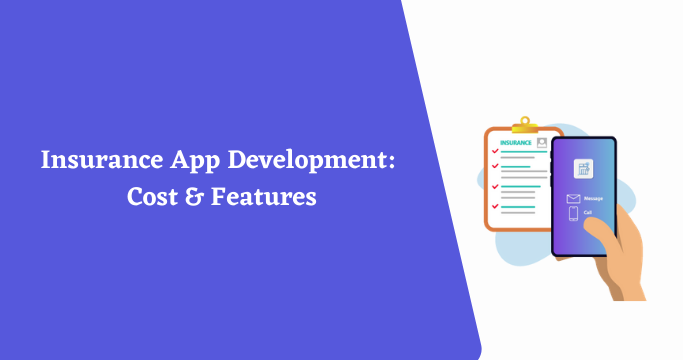Mobile apps have been a game-changer in almost every industry, and the insurance industry is no different. Via streamlined and fast solutions, mobile applications in the insurance sector across the insurer-policyholder divide. It enables policyholders to view their insurance information on the go. Additionally, they allow insurance agents to increase their efficiency by expediting request closures.
The digital transformation movement has necessitated that existing insurance firms and startups investigate the need for mobile application growth. As a result, the time has come to digitize your insurance workflows and procedures through a reputable business development provider partnership.
Types of Mobile Insurance Apps
An optimal insurance mobile product development solution encompasses the following types of applications that can be created in the insurance domain:
- Insurance on Life
- Insurance for health care
- Automobile Insurance
- Insurance for Real Estate
- Insurance for Travel
Insurance Mobile App Features
Consider the critical characteristics of robust insurance smartphone applications.
User Panel
It provides consumers with an easy-to-use self-service app that includes the following capabilities:
- Managing Your Profile
This module enables users to access their records, including contact information, submitted claims, and more.
- Management of Policies
It keeps track of insurance records, one-time fees, and current/past policy documents in a digital format. Additionally, it enables policyholders to use the insurance mobile app‘s capabilities to browse for additional eligible plans, obtain quotes, and enroll in policies that suit their budget and interests.
- Payment of the Premium
This module, which includes an automated payment portal, enables insurers to collect premiums through various available methods. They may even set up automatic purchases and alerts for future premium payments here.
Admin Control Panel
As an integrated part of our insurance software development services, we include a stable admin panel with a live dashboard that provides a 360° view of your market. Additionally, it enables you to add and edit software functionality.
- Organize Users
You will browse, add, and track agent and client profiles along with organizational and personal information here. Additionally, users can access different features of the mobile insurance app depending on their position.
- Document Archive
The module enables the uploading, storing, and handling of electronic copies of records such as identification forms, insurance plans, and claim settlements.
- Management of Policies and Claims
Individuals, enterprises, corporations, and associations will all get their regulation knowledge collection and customized by admin users. Additionally, they will handle policy workflows, track cancellations, and renewals, policy laps procedures, and claim evaluation and processing, among other things.
- Payment Management
It will allow you to configure commissions for agents/brokers, handle consumer repeat billing, and produce instant payment receipts. Additionally, we assist in implementing numerous payment methodologies that allow users to pay through net banking, credit/debit cards, or mobile wallets.
General Requirements for an Insurance Application
- Profile management
Each Insurance application includes a profile segment that contains details regarding the covered item or individual.
- Specifics of the policy
In this case, the software has a downloadable edition of the policy. Additionally, you can access all available policy material here.
- Quotations
Provide accurate prices to the clients by mentioning various regulations alongside quotations. It will make it simple for the consumers to weigh their choices.
- Submitting a Claim
This is the most critical feature of an insurance application. In an emergency, filing a claim must be intuitive and easy. Your app’s claim filing functionality should be straightforward, allowing clients to enter all necessary information conveniently on a single smaller device.
- Simple & Convenient Payment
Integrating a simple payment portal through the Insurance app saves your client time and money. In-app transfers remove the need for your customer to reach the bank physically. A smart payment framework eliminates the need to visit your bank’s app to complete the policy information.
- Notifications
Push alerts allow you to communicate with your customers more quickly. Your policyholders are informed of upcoming fees, policy specifics, and promotional deals, among other things.
- Chatbots/Artificial Intelligence for Customer Support
Chabot, driven by artificial intelligence, expedite policy identity checking, personalize communications between users and customers, expedite claim resolution, and help deter fraud and other consumer inquiries and assistance.
- Uploading documents/images
This is a necessary function to have since consumers would need to submit personal/professional information and images of medical history, insured carport injuries, and so on. This will assist them with processing their insurance application.
Cost of developing an insurance application
When it comes to software production, there is no one-size-fits-all approach. To accurately predict the cost of creating an insurance application, it is critical to consider factors such as characteristics, demographics, the scope of the project, and the company’s scale.
Many factors, including the following, determine the actual cost of developing an Insurance application:
- Unique Features
- The platform of Preference (iOS, Android, or both)
- The location of the application’s production the number of hours spent
- The group you assemble
Considering the above considerations, the MVP expense for a single device (iOS and Android) insurance software production would begin at $25,000. If you want to build for both platforms, the cost will increase to between $50,000 and $75,000.
Final Thoughts
If we move closer to a mobile-first environment, it’s almost sure that several citizens would opt to handle their insurance plans from their smartphones.
The insurance mobile app business is booming. Every insurance provider is focused on developing their own popular insurance app to give their clients unlimited benefits on a single screen and draw new customers.
Any queries about Insurance App Development? Feel free to fill our contact form & our experts will get back to you soon.
